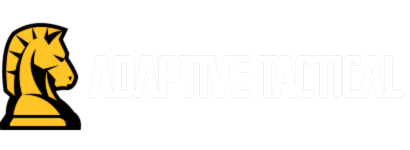Top 12 Pros and Cons – IWB vs. OWB Holster Carry
There are numerous factors to consider with choosing between IWB and OWB holster designs. This is a simple, easy to read list of the top 12 pros and cons associated with IWB and OWB holster designs.
Inside the Waistband (IWB) Holsters:
Pros:
- Better concealment under clothing.
- Provides better retention against the body.
- Reduced risk of printing (outline of the firearm showing through clothing).
- Offers more stability and security due to being closer to the body.
- Generally more comfortable for daily carry for smaller firearms.
- Concealment is easier with lighter clothing.
- Typically easier to access when sitting or driving.
- Less likely to interfere with outer layers of clothing.
- Provides better retention in active situations.
- Allows for a faster draw with practice.
- Less likely to be dislodged or snagged during physical activities.
- May be more suitable for appendix carry positions.
Cons:
- Can be less comfortable when carrying larger firearms.
- May require a larger size of pants to accommodate the holster.
- Slower draw speed for some users, especially with clothing layers.
- Potential for discomfort due to pressure against the body.
- Limited space for accessories such as extra magazines.
- May cause sweat buildup against the body in warmer climates.
- Can be more difficult to re-holster securely.
- Requires practice to effectively draw from a concealed position.
- Less suitable for larger individuals or those with limited mobility.
- May require a specific type of belt for proper support.
- Can be challenging to find a comfortable position for all-day wear.
- May cause irritation or chafing during extended use.
Outside the Waistband (OWB) Holsters:
Pros:
- Generally more comfortable for larger firearms.
- Easier and faster to draw, especially with larger clothing.
- Provides better ventilation for the firearm, reducing sweat buildup.
- Typically offers more space for accessories like extra magazines.
- Easier to re-holster securely.
- Less likely to cause discomfort due to pressure against the body.
- Can accommodate a wider range of firearm sizes and types.
- Provides a more consistent draw position for some users.
- Suitable for a wider range of body types and clothing styles.
- May offer better weight distribution for larger firearms.
- Allows for easier adjustment of holster position.
- Generally more suitable for open carry situations.
Cons:
- Less concealment under clothing, leading to potential printing.
- Can be less stable and secure, especially when bending or twisting.
- Requires larger clothing to effectively conceal.
- More likely to interfere with outer layers of clothing.
- May be less comfortable for daily wear, especially in warmer climates.
- Potential for snagging or catching on objects or clothing.
- May be more difficult to access when sitting or driving.
- Can be uncomfortable when carrying while seated for extended periods.
- Less suitable for appendix carry positions.
- Requires more attention to clothing choices to avoid exposure.
- May cause discomfort during extended use.
- Concealment can be more challenging with tighter-fitting clothing.
Also in BLOG

8 Spring Cleaning & Maintenance Steps for Your AR-15
Spring is here, and it’s time to break out your AR-15 after those long, cold winter months. Whether your rifle was stored or saw some action during winter, a thorough cleaning and maintenance session is essential for peak performance. In true modern gunsmith style, here’s a rundown of eight critical steps to get your AR-15 ready for the warmer days ahead.

6 Reasons to Install a Forend Light on Your Home Defense Shotgun
When seconds count in a home defense scenario, every tactical advantage matters. Equipping your shotgun with a forend light isn’t just an accessory, it’s a critical enhancement that can improve your response time and overall control under low-light conditions. Below we explore six technical reasons to install a forend light on your home defense shotgun, complete with situational insights and pro tips to maximize your effectiveness.

5 Must-Have Features in a Tactical AR-15 Stock (And How the EX AR Stock Delivers)
To help you make an informed choice, we’ve identified the 5 must-have features in a tactical AR-15 stock and show how the Adaptive Tactical EX AR Stock delivers on all of them.
